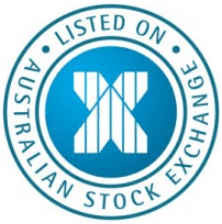
Chris Weston, Chief Market Strategist at IG Markets
US bond yields have eased higher over the last five sessions, although the 10-year has eased back a couple of basis points today.US treasuries and US assets in general take a back seat, with Europe taking the main stage and are smack bang in the markets sights.
Today’s session carries risks for both the bulls and the bears, with overnight implied volatility on EUR/USD at the highest level since 2011. There is clear merit in those calling for upside in EUR or expecting downside risks to European bond markets (prices down, yields up) and equity markets, but in my opinion Mario Draghi holds all the cards. Don’t underestimate the ECB president’s power of surprise, and after guiding the market into pricing in action over the last month, Mr Draghi could easily say something that is new news and needs to be in the price.
The prospect of a crazy hour in financial markets is high, although we could see very little in the way of range expansion, but this seems unlikely. We need to be cognisant that traders are looking out for a lowering of the rates ‘corridor’ (i.e. a cut to the lending, refinancing and deposit rate), however the ECB’s inflation expectations are also in focus and likely to be lowered, with Mario Draghi’s press conference focusing on more unconventional policy easing. The press conference is where we look out for a new, potentially four-year, capital injection into banks, in the hope to incentives them to lend to small and medium enterprises, or new measures to expand excess liquidity in the region by halting the sterilisation of its 2012 Securities Market Program. Perhaps we could get a more detailed discussion on QE; a fate that is now expected by many in the market in the next 6-12 months given the trajectory of inflation forces across the region.
Options suggesting a lively session ahead of us
With spot trading around 1.3590 (at the time of writing), IG are currently pricing a 1.3590 at-the-money EUR/USD ‘straddle’ (the purchase of a put and call option of the same strike and expiry) at 92. This pricing structure implies a 92 point move is expected up until the FX daily close, and regardless of the direction of EUR/USD, traders are simply speculating on a pick-up in volatility.
Asia has been fairly sanguine ahead of European trade, with Japan, Australia and Chinese equity markets up less than 0.3%. Data in the region has focused on Japanese Ministry of Finance (MOF) fund flow data, where we have seen foreigners buying ¥546 billion of Japanese stocks last week, which is second highest level of the year. It seems global funds have been keen to take advantage of the better trend in USD/JPY and portfolio re-allocation likely to take place in August from the Government Investment Fund (GPIF).
In Australia we have seen poor April trade figures, with the surplus pulling back into a deficit for the first time in five months. A 2% increase in imports was met with a 1% fall in exports; however the reaction in the AUD was minimal with AUD/USD slipping back to 0.9253.
Iron ore in focus
It’s interesting to see limited selling in Aussie iron ore miners, with rebar and iron ore futures looking like they want to head lower. There have been a couple of negative articles reported today including one from Bloomberg quoting Michael Zhu (the former global sales director at Vale), saying the plunge in the iron ore price is likely to cause a wave of closers of high-costs producers, although this won’t necessarily surprise too many. There has also been talk that China’s biggest trade financier is cutting the use of iron ore as collateral in sourcing credit.
This last point wont surprise too many either, as we have seen the PBOC already depreciating the CNY fairly aggressively. The link to iron ore here is that individuals would use iron as collateral to obtain financing and ultimately get money into China, while much of these funds were then subsequently placed into wealth management products (WMPs) for an 8-9% yield; they would then also get the benefit of a marginally higher CNY and lower USD. Thus money was made on a higher iron ore price, the investment (in WMPs) and the currency. It was an amazing trade for all who undertook it, but clearly its days are numbered.
Things are eerily quiet, and this should come across in the open. In the forex market the biggest move in Asia has been CAD/JPY, which has lost 0.3%, however the biggest move the USD has seen is +/- 0.2%. The biggest major index move is 0.2%, while there have been some modest buying of US treasuries, with no moves in commodities either – although copper needs close attention as the March uptrend (on the July contract) has now broken. These tight ranges were always going to happen, especially with the flat lead, but the trading community is keen to see increased volatility, so perhaps this will start later today.